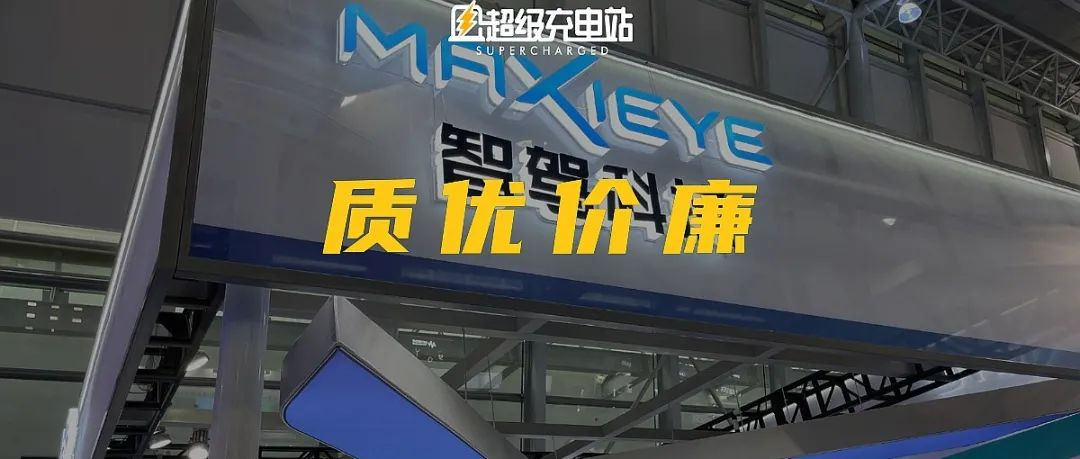Autonomous Driving: An Important Part of the “New Four Modernizations” of the Automotive Industry
Autonomous driving is an important part of the “new four modernizations” of the automotive industry. In recent years, not only have major automakers been working hard on research and development, but there has also been a surge of technological innovation companies. Among them, the most well-known is Mobileye, which is owned by Intel.
However, this has also raised a problem: more and more related technology companies always seem to have trouble with the word “Eye” when they name themselves. Just the other day, news broke that MINIEYE, a domestic manufacturer, has entered the field of intelligent cabins. Recently, MAXIEYE, another manufacturer, has also invited us to their event.
“When I received the invitation, I felt a little confused,” one of our colleagues joked.
Jokes aside, after carefully studying the background information of MAXIEYE, we discovered that this company is not ordinary.
MAXIEYE was founded in 2016 and focuses on innovation in intelligent driving visual perception systems, providing partners with advanced driver assistance systems (ADAS) and self-driving (AD) system products and solutions. When the company was first established, it did not directly choose to enter the more media and public attention-grabbing field of autonomous driving technology research and development for passenger cars, but chose a more prudent and practical business model: providing solutions for commercial vehicles.
There is also a related industry regulatory background- in 2017, the state began to implement the national “Safety Technical Conditions for Operating Passenger Cars” (JT/T 1094-2016) standard. This standard sets forth mandatory installation time points for commercial passenger vehicles to be equipped with front-collision warning systems (FCWS), lane-departure warning systems (LDWS), and automatic emergency braking systems (AEBS), respectively.
Driven by regulations, domestic commercial vehicle enterprises have begun the process of equipping ADAS systems such as warning and braking functions on their vehicles. MAXIEYE has keenly grasped this market opportunity and cooperated with leading commercial vehicle enterprises such as Yutong and Golden Dragon. In 2019, it had already taken more than 80% of the market share for ADAS systems in domestic commercial vehicles.
After that, the country’s relevant technical standards for heavy trucks began to be implemented in September 2020. That year, MAXIEYE achieved good results in the ADAS market for commercial trucks with monthly shipments of tens of thousands of sets and annual shipments of over 100,000 sets. It established mass production or project cooperation relationships with the top ten truck manufacturers.
It is not difficult to guess what happened next- with the accumulation of the commercial vehicle market, MAXIEYE naturally began to prepare to enter the passenger vehicle market.On October 19th, MAXIEYE announced at the annual meeting of the China Society of Automotive Engineering that its first intelligent cruise control product for passenger cars, MAXIPILOT 1.0, will be mass-produced and first installed on two domestic self-owned brand passenger cars this year.
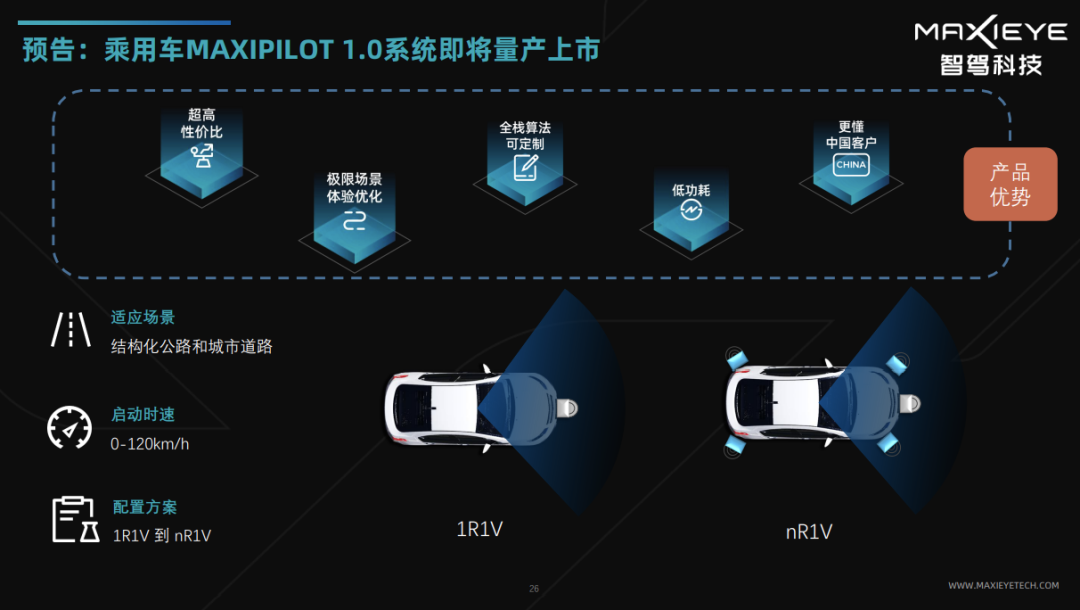
MAXIEYE’s official description of the system is also pragmatic: focusing on passenger car models in the 100,000 to 150,000 yuan price range, providing structured road and city road scenario coverage, supporting ADAS auxiliary functions such as LDW, LCC, ACC, FCW/PCW+AEB, TJA, HBA, TSR, TLR, SCW, DDW, and ILC, achieving L2 level of autonomous driving.
The ultimate goal is to provide consumers with affordable and willing-to-use intelligent driving systems.
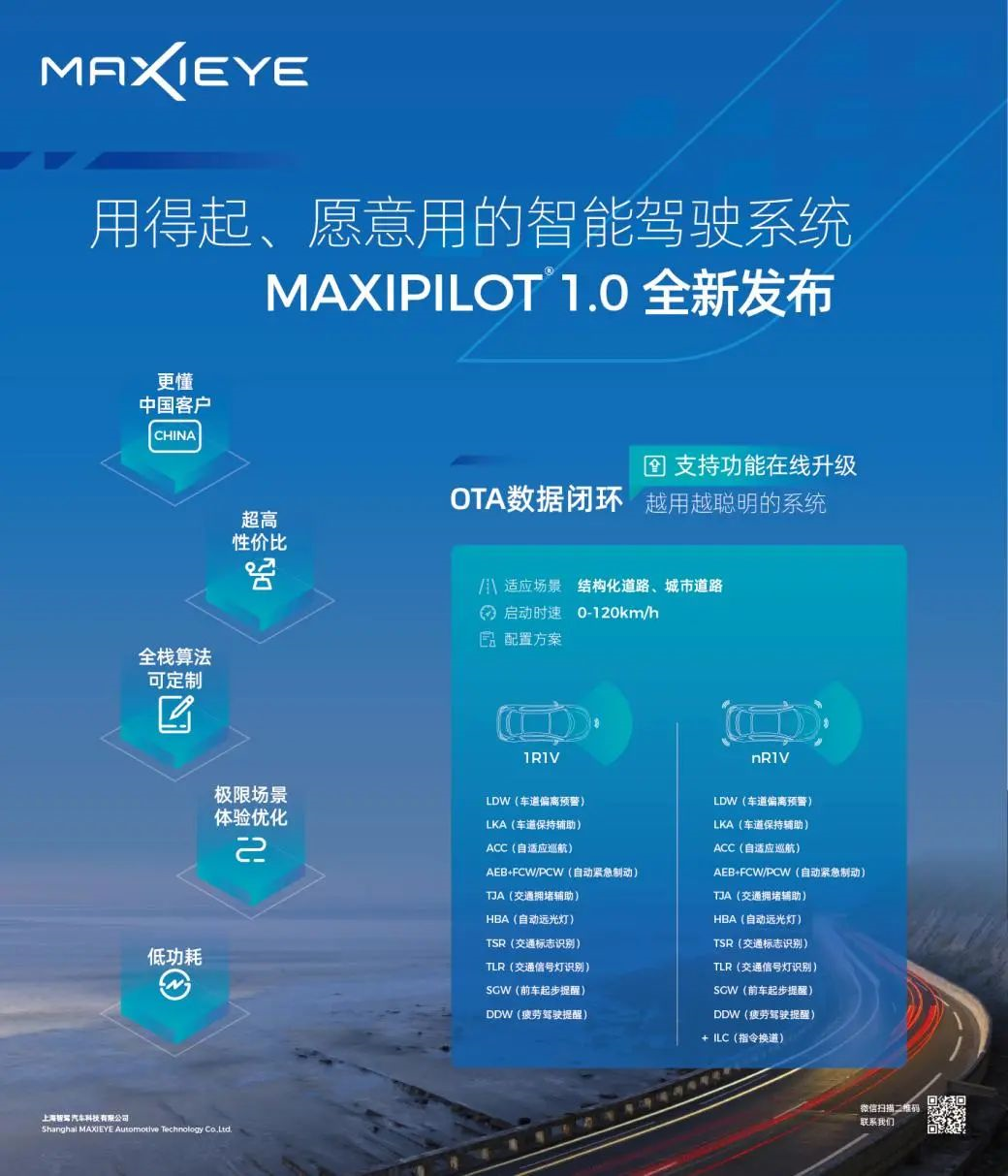
“Affordable” naturally highlights the high cost-effectiveness of MAXIPILOT 1.0.
MAXIEYE stated that it adheres to technology-independent cost control. The system uses independently developed full-stack core technology and does not rely on expensive foreign technologies, which greatly reduces costs. Its core advantages include:
-
Image-level raw truth and generalized scene understanding brought by self-developed full-stack technology from perception to decision-making and rule control, greatly reducing the error accumulation caused by the cross-platform research and development of perception and rule control, and better achieving customized products for customers.
-
Using image analysis technologies such as video streams (multiframe) and introducing time dimension analysis based on three-dimensional scene construction to achieve a breakthrough from three-dimensional to four-dimensional perception, realizing pure visual distance and speed measurement and stable global target tracking, and better assisting the integration and development of intelligent driving system-level products.
In plain language, MAXIEYE is taking a route similar to Tesla’s “algorithmic approach” to maximize the performance of small computational chips and single sensors, thereby achieving cost optimization of the entire system.
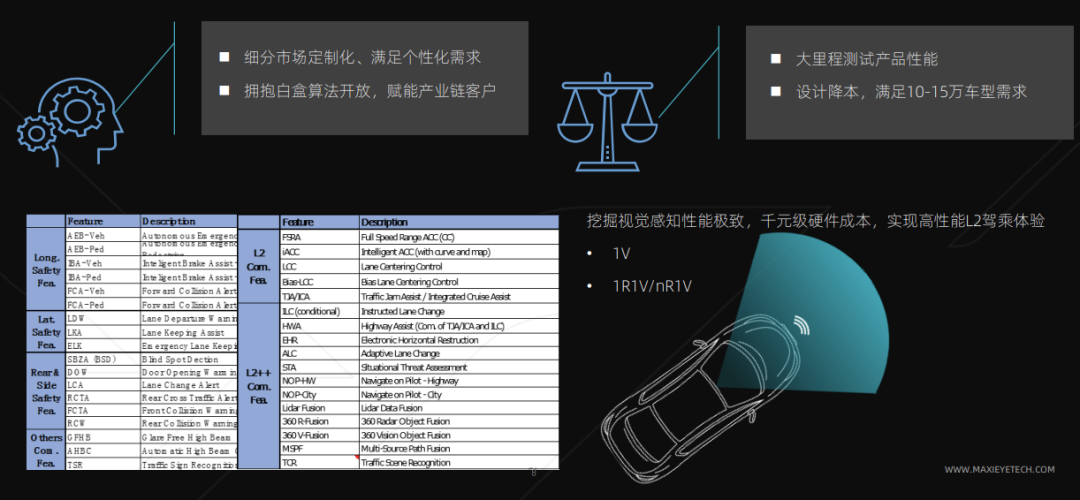
“Willing-to-use” means providing “ADAS solutions that understand Chinese traffic scenarios better.”
MAXIEYE COO Yang Tengfei made an analogy with the common ACC adaptive cruise control function when introducing the advantages of the system. He said that nowadays, car owners often find that using ACC is more tiring than driving themselves. This is because the mainstream ADAS system in the market cannot cope well with China’s special traffic scenarios such as overtaking and “ghost detectors”, which can cause more anxiety for car owners.
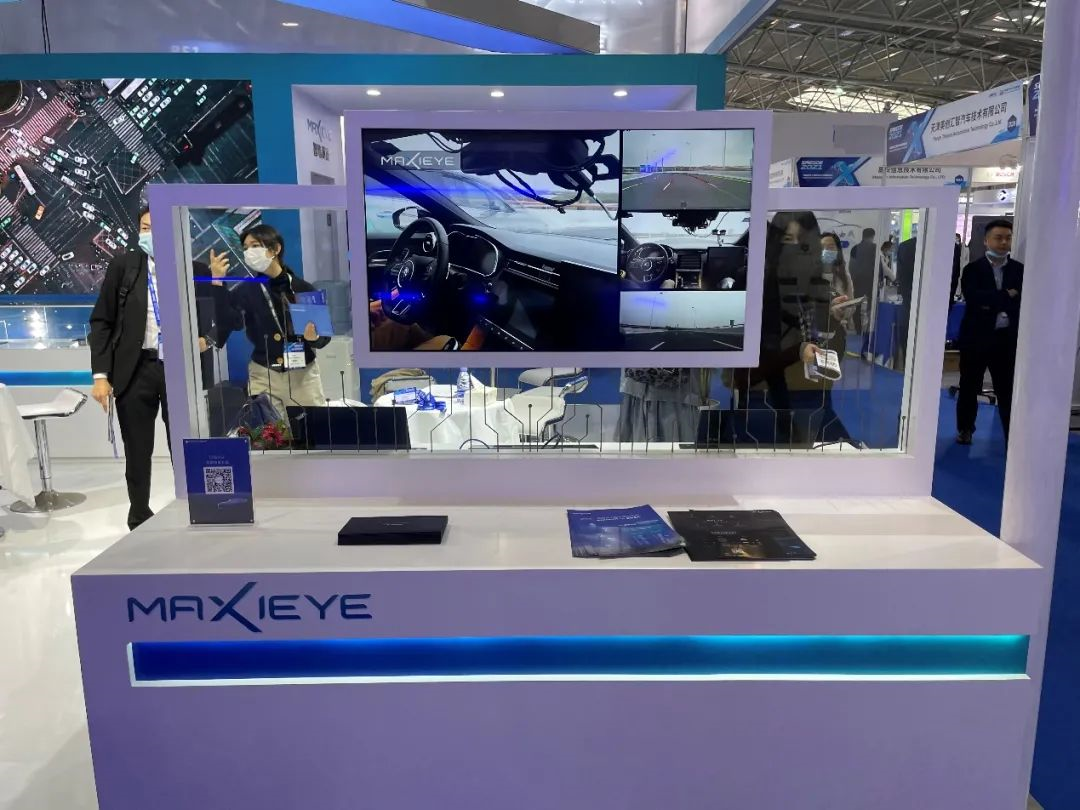
MAXIPILOT 1.0 system has optimized and validated a large amount of domestic road scene data, placing safety first, and developed a full-stack technical solution and AI neural network model that understands Chinese road conditions better. At the same time, MAXIEYE will cooperate deeply with host manufacturers to feed back data to algorithms and continuously solve the difficult problems of extreme scenario systems through OTA upgrades, in order to create a truly good and user-friendly intelligent driving system for consumers.
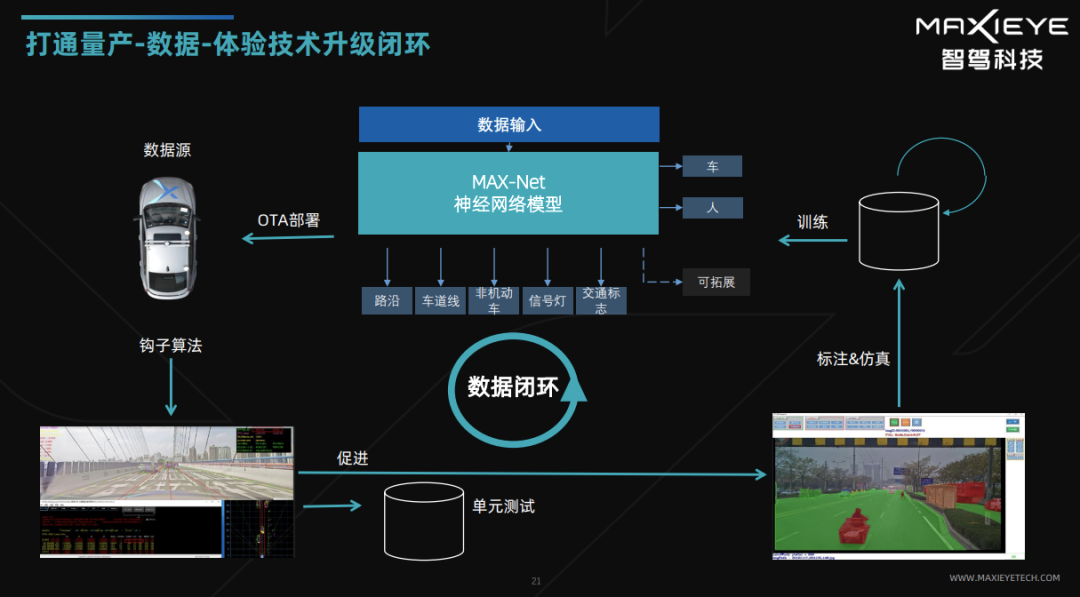
Of course, whether MAXIPILOT 1.0 can really be as excellent as described by the official still needs to wait for its actual performance after mass production and installation on cars.
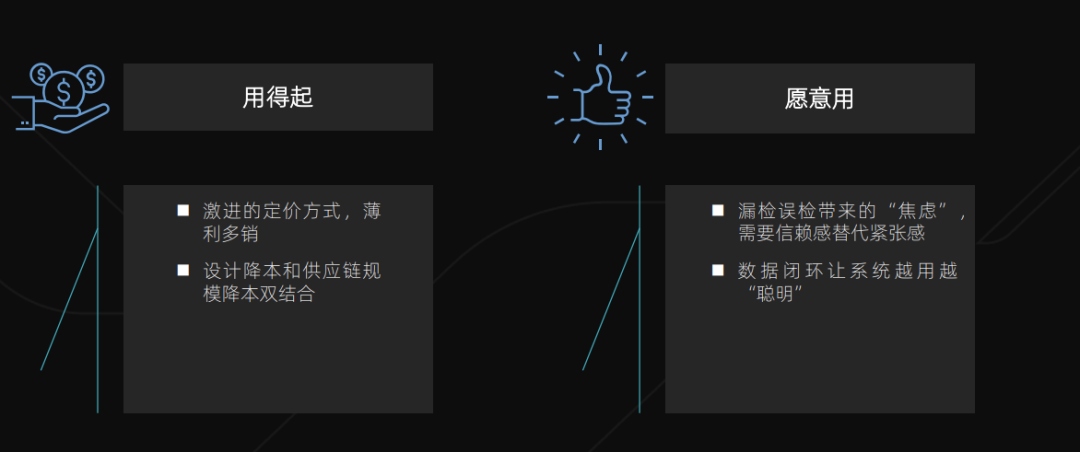
In addition to the various advantages of the MAXIPILOT 1.0 system, there are also two industry-related topics worth paying attention to in the speeches of MAXEYE executives.
One is the transformation of the division of labor layout in the automotive industry chain. The traditional division of labor in the automotive industry chain is in the form of a pyramid, with the whole vehicle factory on top and Tier 1 and Tier 2 below.
Now, with the rise of intelligent driving technology, the division of labor in the entire automotive industry chain is gradually changing to a “roundtable” approach- the relationship between the vehicle manufacturer and the technology innovation enterprise is transitioning from a top-down supplier relationship to a “roundtable discussion” to jointly explore the mode of technological innovation.

Another topic worth paying attention to is the thinking about the “endgame” of autonomous driving.
We all hope that the era of fully driverless autonomous driving will come soon, but the reality is not so optimistic.
This is like boiling water. In order for water to boil, it must be heated to 100 degrees Celsius, even if it is heated to 99 degrees, it will not boil. This is very similar to the relationship between driving assistance and autonomous driving. Only when 100% of the scenario is covered can it be fully autonomous driving.When discussing the difference between 100 degrees and 99 degrees, there was a “golden sentence” from MAXIEYE’s senior management: “Even if the safety problems of Corner Cases in the autonomous driving industry occur only once in ten thousand times, the impact of an accident on an individual is 100%.”
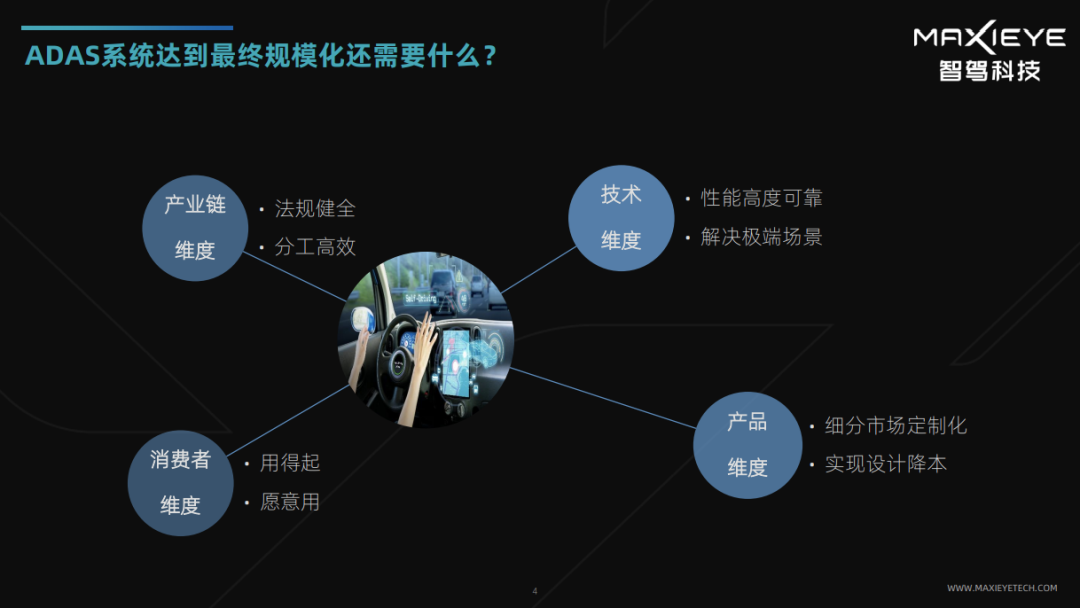
This reminds me of the phrase “the truthfulness of news is like a bottomless pit” which I heard in college. It seems that “fully automated driving” might also fall into this category.
Instead of focusing on when the elusive L5 level of autonomous driving can be achieved, manufacturers might consider putting more effort into making their products user-friendly and satisfying for consumers.
In this respect, it seems that MAXIEYE has chosen the right path.
This article is a translation by ChatGPT of a Chinese report from 42HOW. If you have any questions about it, please email bd@42how.com.
